There’s something magical about autumn—the crisp air, the crunch of leaves underfoot, and the vibrant, fiery hues that transform ordinary landscapes into breathtaking displays. Trees that put on a brilliant show of color in fall are the crown jewels of gardens and streetscapes. From scarlet reds and golden yellows to deep purples and glowing oranges, these trees not only celebrate the changing season but also add long-term value and beauty to any yard.
If you’re dreaming of a fall landscape that turns heads, here are 10 stunning trees known for their dramatic autumn colors—plus tips on how to grow them successfully.
1. Sugar Maple (Acer saccharum)
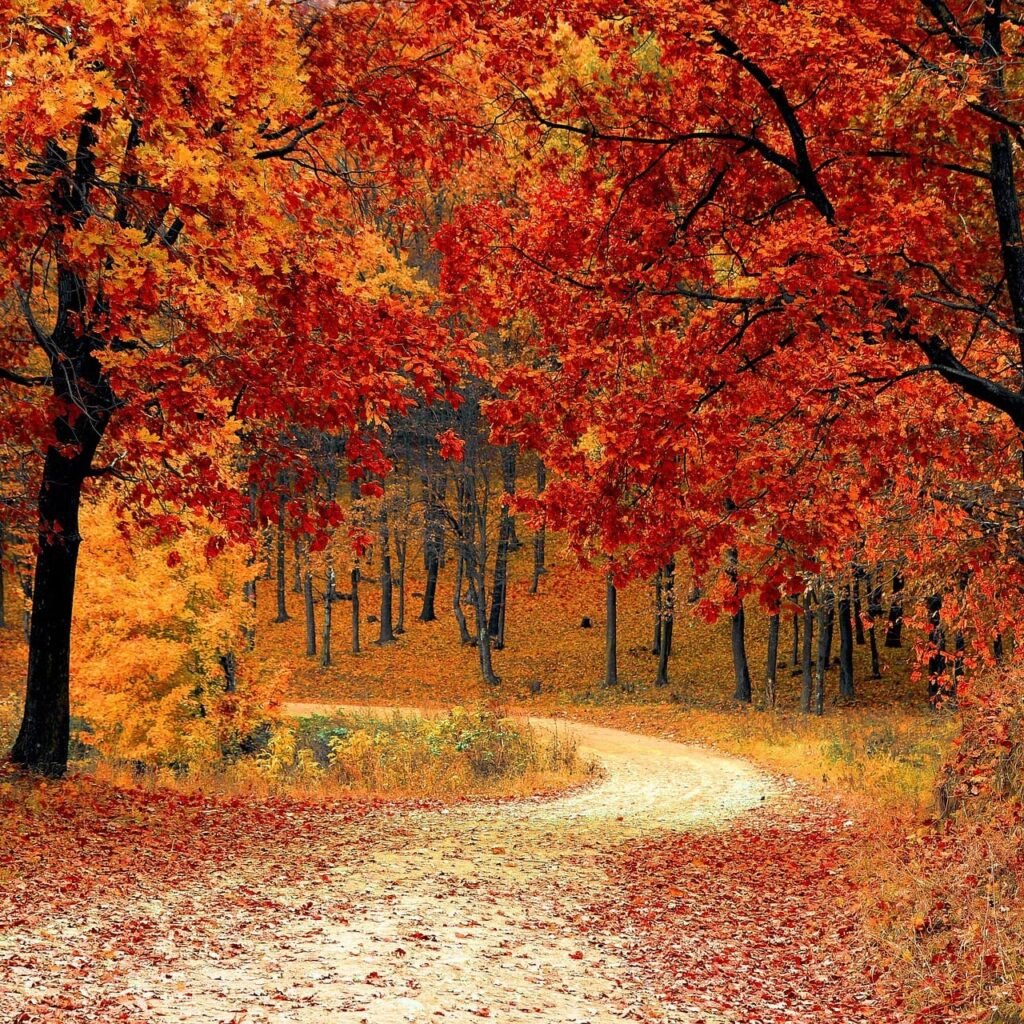
Few trees embody the spirit of fall like the Sugar Maple. Famous across North America for its blazing display, it turns brilliant shades of orange, red, and gold.
Why It’s Great:
- Iconic fall foliage, especially in the northeastern U.S. and Canada.
- Large shade tree that adds presence to any yard.
- Produces sap used for maple syrup.
Care Tips:
- Needs full sun and well-drained soil.
- Allow plenty of space—it can grow up to 70–100 feet tall.
- Hardy in USDA zones 3–8.
2. Red Maple (Acer rubrum)
Living up to its name, the Red Maple dazzles with scarlet, crimson, and orange tones in autumn. Its faster growth makes it popular for suburban yards.
Why It’s Great:
- Brilliant red tones that appear early in fall.
- Versatile; tolerates different soil types.
- Grows 40–60 feet tall, perfect for mid-sized landscapes.
Care Tips:
- Thrives in full sun to partial shade.
- Water young trees regularly until established.
- Hardy in zones 3–9.
3. Japanese Maple (Acer palmatum)
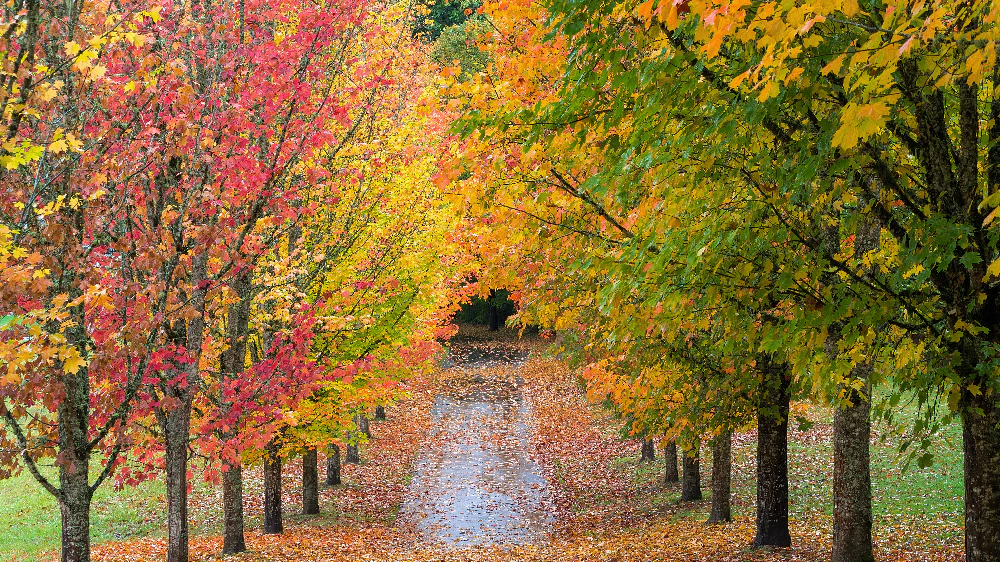
Japanese Maples are prized for their delicate, lacy leaves that explode in rich shades of crimson, purple, or fiery orange in autumn.
Why It’s Great:
- Ideal for small yards or container gardens.
- Wide variety of cultivars with unique fall colors.
- Adds elegance to any landscape.
Care Tips:
- Prefers partial shade, especially in hot climates.
- Protect from strong winds to avoid leaf scorch.
- Hardy in zones 5–8.
4. Ginkgo (Ginkgo biloba)
An ancient species, the Ginkgo transforms into a glowing golden-yellow beacon in fall. Its unique fan-shaped leaves drop almost simultaneously, carpeting the ground in color.
Why It’s Great:
- Distinctive leaf shape and uniform fall color.
- Very tolerant of pollution, making it perfect for cities.
- Can live for hundreds of years.
Care Tips:
- Choose a male tree to avoid messy, smelly fruit.
- Plant in full sun and well-drained soil.
- Hardy in zones 3–8.
5. Sweetgum (Liquidambar styraciflua)
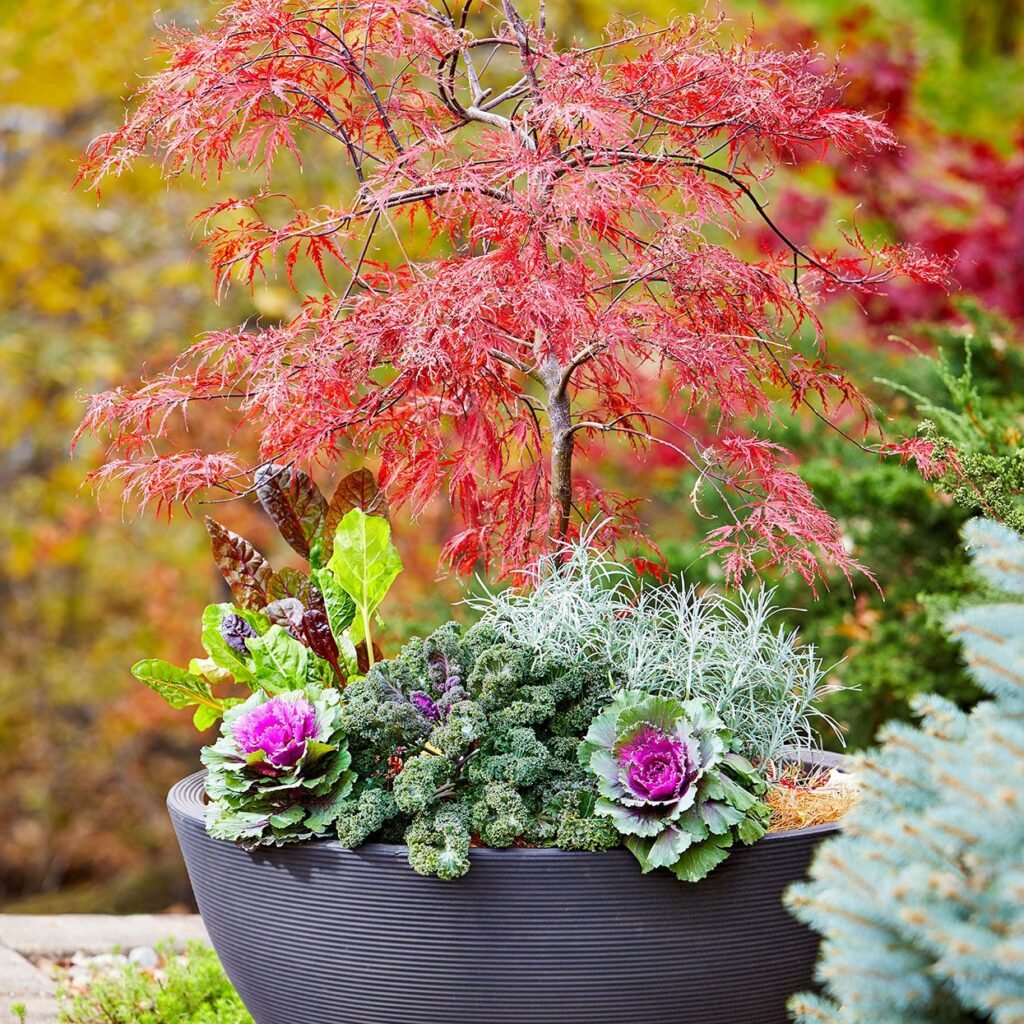
Sweetgum trees are known for their star-shaped leaves that display a kaleidoscope of fall colors—reds, oranges, purples, and even pinks.
Why It’s Great:
- Multicolor effect in a single tree.
- Distinctive spiky seed pods add winter interest.
- Grows tall (60–75 feet), making it a striking focal point.
Care Tips:
- Best in full sun and moist, acidic soil.
- Needs plenty of space due to its size.
- Hardy in zones 5–9.
6. Bald Cypress (Taxodium distichum)
Though a conifer, the Bald Cypress loses its needles in fall—turning rich copper and rust-orange before dropping.
Why It’s Great:
- Unique, feathery foliage with stunning autumn tones.
- Thrives in wet areas, making it perfect for pondsides.
- Strong, long-lived tree often seen in the southern U.S.
Care Tips:
- Plant in full sun.
- Tolerates wet or dry soils.
- Hardy in zones 4–10.
7. Sassafras (Sassafras albidum)
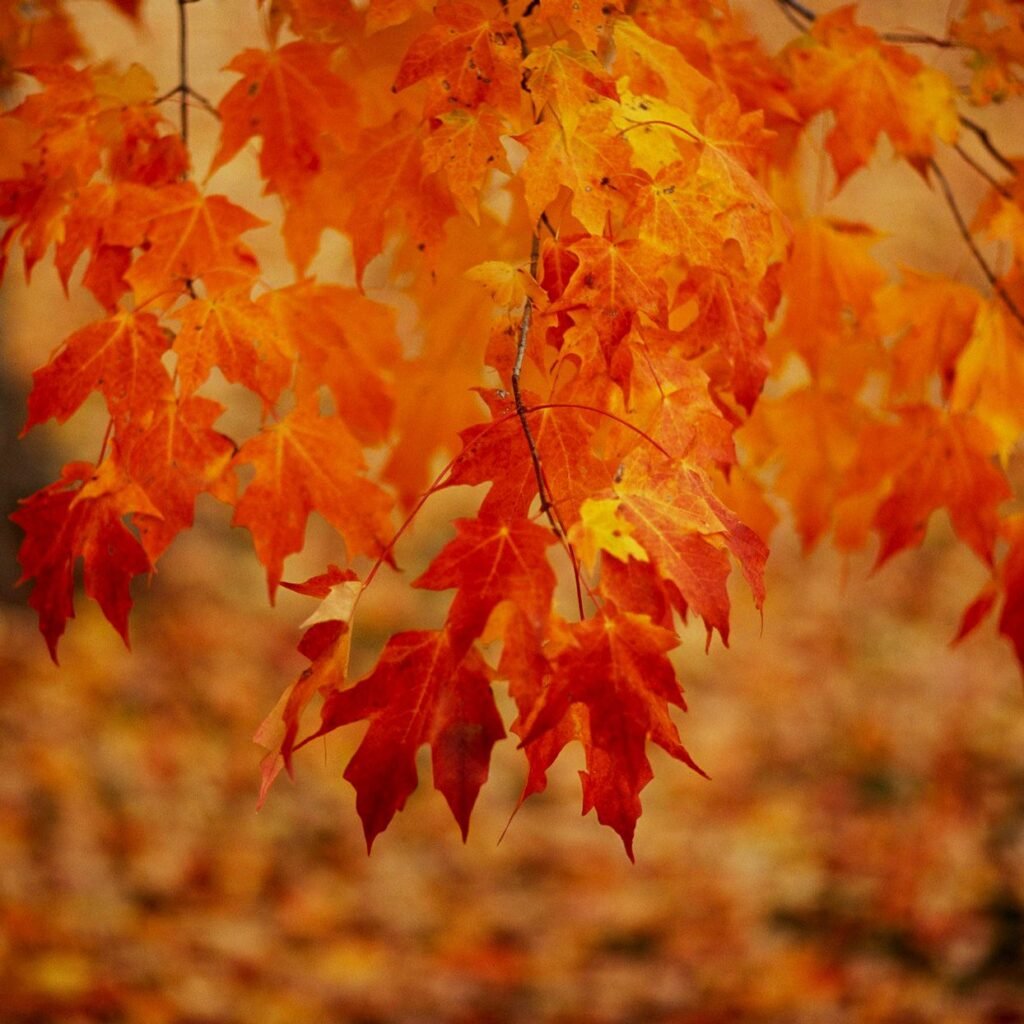
This native tree delivers one of the most varied fall displays, with leaves turning yellow, orange, scarlet, and even purple—all at once.
Why It’s Great:
- Colorful and whimsical foliage with mitten-shaped leaves.
- Provides wildlife habitat and aromatic roots/leaves.
- Perfect for naturalized or woodland gardens.
Care Tips:
- Prefers well-drained, acidic soil.
- Spreads by root suckers—be prepared for thickets.
- Hardy in zones 4–9.
8. Black Tupelo (Nyssa sylvatica)
Also called Black Gum, this tree turns a brilliant, glossy red in fall, sometimes with hints of orange and purple.
Why It’s Great:
- Intense, consistent fall color.
- Attractive bark and wildlife-friendly berries.
- Excellent choice for large landscapes.
Care Tips:
- Plant in full sun to partial shade.
- Needs moist, acidic soil for best results.
- Hardy in zones 4–9.
9. Dogwood (Cornus florida)
Flowering Dogwoods are spring stars, but their fall show is just as impressive, with leaves turning scarlet to burgundy. Their red berries also attract birds.
Why It’s Great:
- Dual-season interest: spring blooms and fall foliage.
- Compact size fits in smaller yards.
- Provides food for wildlife.
Care Tips:
- Prefers partial shade in hotter regions.
- Needs consistently moist, well-drained soil.
- Hardy in zones 5–9.
10. Quaking Aspen (Populus tremuloides)
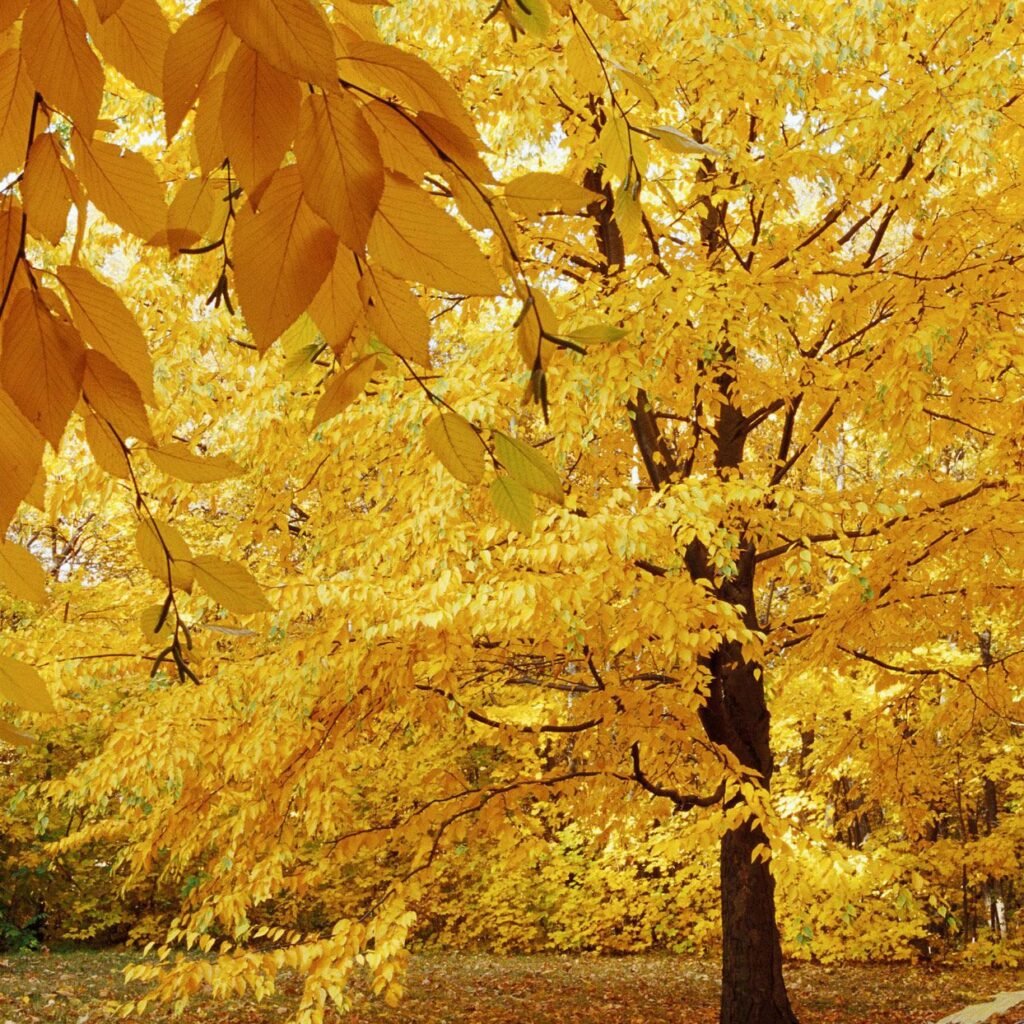
Known for its fluttering leaves, the Quaking Aspen lights up in golden yellow during fall. Entire groves shimmer like sunlight when the wind blows.
Why It’s Great:
- Brilliant, uniform yellow color.
- Iconic in the Rocky Mountains and northern U.S.
- Creates stunning group plantings.
Care Tips:
- Best planted in groups for maximum effect.
- Thrives in cooler climates and well-drained soil.
- Hardy in zones 1–7.
Tips for Planting Fall-Color Trees
- Mix and Match Colors: Combine red, yellow, and orange trees for a layered autumn display.
- Think About Size: Large shade trees like Sugar Maples are great for wide yards, while Japanese Maples or Dogwoods fit small spaces.
- Soil and Climate Matter: Some trees, like aspens, thrive in cool climates, while Bald Cypress tolerates heat and moisture.
- Year-Round Interest: Choose trees that offer spring blooms or winter structure, not just fall foliage.
- Plant in Groups: For maximum visual impact, plant multiple trees together instead of scattering them.
Final Thoughts
A fall garden without trees that change color is like a painting without contrast. These 10 trees bring a dynamic palette to your yard, ensuring that each autumn feels like a celebration of nature’s artistry. Whether you love the fiery oranges of Sugar Maples, the golden glow of Ginkgos, or the deep reds of Dogwoods, adding a fall-color tree is one of the best investments you can make in your landscape.
With thoughtful planting and care, your yard can become a show-stopping autumn destination for years to come.
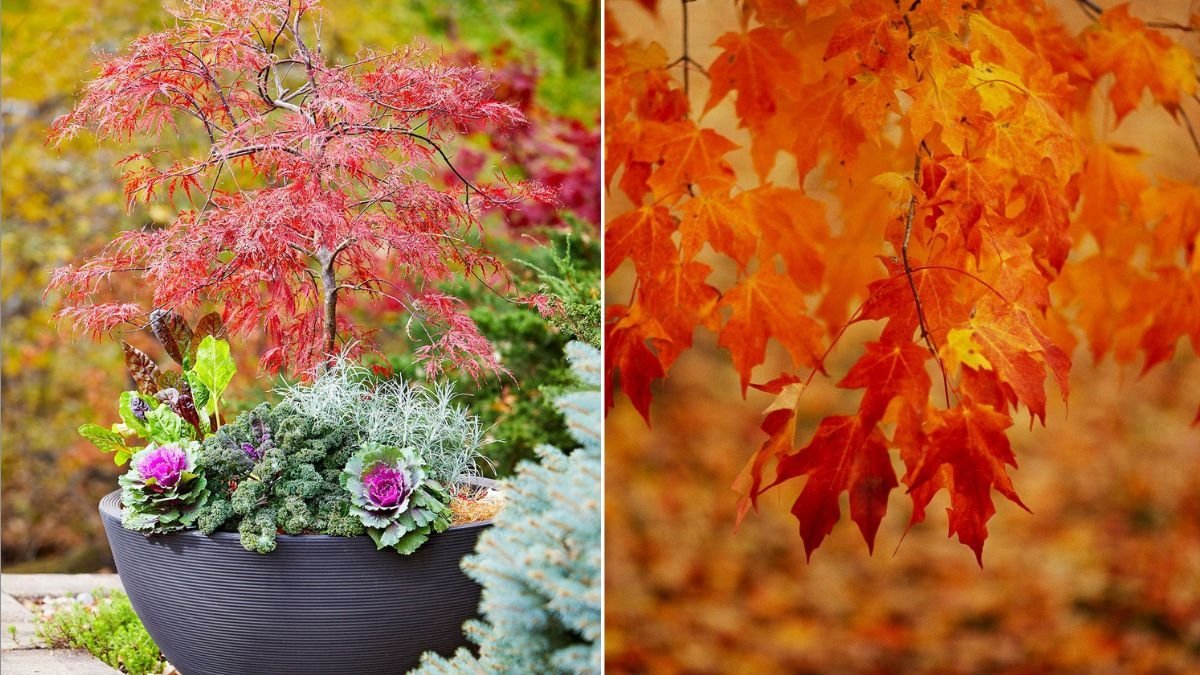



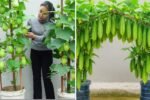

Leave A Comment